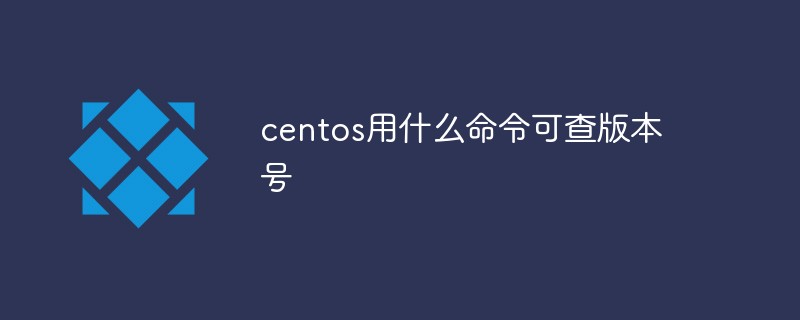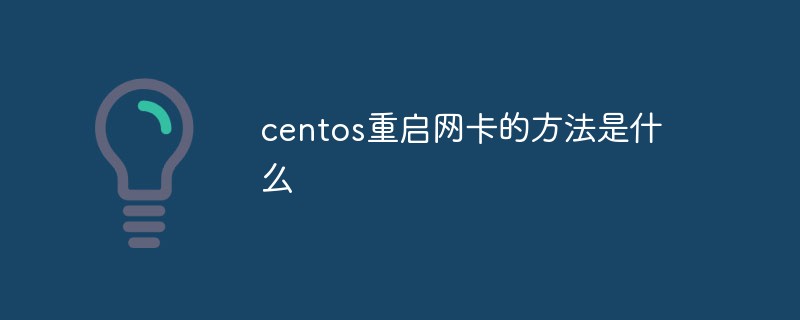Under CentOS system, installing NetData and ntfs-3g is an important task. NetData is a powerful system monitoring tool that can monitor server performance and resource usage in real time. And ntfs-3g is a driver for reading and writing NTFS file systems in Linux systems, which can easily interact with Windows systems. This article will provide you with a detailed installation guide to help you easily install and configure these two tools. Let’s take a look!

Install NetData
1. Download NetData
We need to download the version suitable for CentOS system from the official website of NetData. After the download is completed , decompress the compressed package to the appropriate location.
2. Configure NetData
After decompression is completed, enter the NetData installation directory and execute the following command to configure:
```bash
./ configure --with-python3-enabled
```
This command will check the system environment and generate the configuration file.
3. Compile and install NetData
Execute the following commands to compile and install:
make
sudo make install
Installation completed Afterwards, NetData will start automatically.
Install ntfs-3g
1. Download ntfs-3g
We need to download the version suitable for CentOS system from the official website of ntfs-3g. After the download is completed, it will be compressed Unzip the package to the appropriate location.
2. Install dependency packages
Before installing ntfs-3g, you need to install some dependency packages. Execute the following command to install:
sudo yum install -y fuse libfuse libntfs-3g libntfs-3g-devel
3. Compile and install ntfs-3g
Enter the installation directory of ntfs-3g and execute the following commands to compile and install:
./configure --with-fuse=internal --disable-example-tests --disable-fusermount --disable-ntfsprogs --disable-ntfscat --disable-ntfsls --disable-ntfsmount --disable-ntfspart --disable -ntfspartx --disable-ntfstruncate --disable-ntfsck --disable-ntfsmount --disable-ntfscmp --disable-ntfspersist --disable-ntfspersistx --disable-ntfsclone --disable-ntfscluster --disable-ntfsclusterx --disable -ntfscc --disable-ntfschange --disable-ntfscc2 --disable-ntfscheck --disable-ntfscheck2 --disable-ntfscp --disable-ntfscp2 --disable-ntfsresize --disable-ntfsresize2 --disable-ntfssetsize --disable -ntfssetsize2 --disable-ntfsresize_real --disable-ntfssetsize_real --disable-ntfstrim --disable-ntfstruncate --disable-ntfstruncate2 --disable-ntfsync --disable-ntfsunmount --disable-ntfsunmount2 --disable-ntfspersist_all --disable -ntfspersistx_all --disable-ntfsclone_all --disable-ntfscluster_all --disable-ntfsclusterx_all --disable-ntfscc_all --disable-ntfscheck_all --disable-ntfscheck2_all --disable-ntfscp_all --disable-ntfscp2_all --disable-ntfsresize_all --disable -ntfssetsize_all --disable-ntfstruncate_all --disable-ntfsunmount_all --with-libfuse=internal
After the installation is completed, we can access the NTFS partition under the Windows system under the Linux system.
The above is the detailed content of Detailed guide to installing NetData and ntfs-3g under CentOS system. For more information, please follow other related articles on the PHP Chinese website!
 centos用什么命令可查版本号Mar 03, 2022 pm 06:10 PM
centos用什么命令可查版本号Mar 03, 2022 pm 06:10 PM查版本号的命令:1、“cat /etc/issue”或“cat /etc/redhat-release”,可输出centos版本号;2、“cat /proc/version”、“uname -a”或“uname -r”,可输出内核版本号。
 centos重启网卡的方法是什么Feb 22, 2023 pm 04:00 PM
centos重启网卡的方法是什么Feb 22, 2023 pm 04:00 PMcentos重启网卡的方法:1、对于centos6的网卡重启命令是“service network restart”;2、对于centos7的网卡重启命令是“systemctl restart network”。
 centos php怎么安装opcacheJan 19, 2023 am 09:50 AM
centos php怎么安装opcacheJan 19, 2023 am 09:50 AMcentos php安装opcache的方法:1、执行“yum list php73* | grep opcache”命令;2、通过“yum install php73-php-opcache.x86_64”安装opcache;3、使用“find / -name opcache.so”查找“opcache.so”的位置并将其移动到php的扩展目录即可。
 centos 怎么离线安装 mysqlFeb 15, 2023 am 09:56 AM
centos 怎么离线安装 mysqlFeb 15, 2023 am 09:56 AMcentos离线安装mysql的方法:1、将lib中的所有依赖上传到linux中,并用yum命令进行安装;2、解压MySQL并把文件复制到想要安装的目录;3、修改my.cnf配置文件;4、复制启动脚本到资源目录并修改启动脚本;5、将mysqld服务加入到系统服务里面;6、将mysql客户端配置到环境变量中,并使配置生效即可。
 centos 7安装不出现界面怎么办Jan 03, 2023 pm 05:33 PM
centos 7安装不出现界面怎么办Jan 03, 2023 pm 05:33 PMcentos7安装不出现界面的解决办法:1、选择“Install CentOS 7”,按“e”进入启动引导界面;2、 将“inst.stage2=hd:LABEL=CentOS\x207\x20x86_64”改为“linux dd”;3、重新进入“Install CentOS 7”,按“e”将“hd:”后的字符替换成“/dev/sdd4”,然后按“Ctrl+x”执行即可。
 centos 怎么删除 phpFeb 24, 2021 am 09:15 AM
centos 怎么删除 phpFeb 24, 2021 am 09:15 AMcentos删除php的方法:1、通过“#rpm -qa|grep php”命令查看全部php软件包;2、通过“rpm -e”命令卸载相应的依赖项;3、重新使用“php -v”命令查看版本信息即可。
 centos中ls命令不显示颜色怎么办Apr 20, 2022 pm 03:16 PM
centos中ls命令不显示颜色怎么办Apr 20, 2022 pm 03:16 PM方法:1、利用“vim ~/.bashrc”编辑用户目录(~)下的“.bashrc”文件;2、在文件内添加“alias ls="ls --color"”;3、利用“:wq!”命令保存文件内的更改;4、“exit”命令退出终端后重新连接即可。
 linux怎么查看块设备信息Feb 09, 2023 pm 01:10 PM
linux怎么查看块设备信息Feb 09, 2023 pm 01:10 PM在linux中,可以使用lsblk命令来查看块设备(硬盘,闪存盘,CD-ROM等)的信息,语法“lsblk [选项] 设备名”。lsblk命令用于列出所有可用块设备的信息,还能显示它们之间的依赖关系,但不会列出RAM盘的信息。


Hot AI Tools

Undresser.AI Undress
AI-powered app for creating realistic nude photos

AI Clothes Remover
Online AI tool for removing clothes from photos.

Undress AI Tool
Undress images for free

Clothoff.io
AI clothes remover

AI Hentai Generator
Generate AI Hentai for free.

Hot Article

Hot Tools

SAP NetWeaver Server Adapter for Eclipse
Integrate Eclipse with SAP NetWeaver application server.

EditPlus Chinese cracked version
Small size, syntax highlighting, does not support code prompt function

Dreamweaver Mac version
Visual web development tools

Notepad++7.3.1
Easy-to-use and free code editor

VSCode Windows 64-bit Download
A free and powerful IDE editor launched by Microsoft







